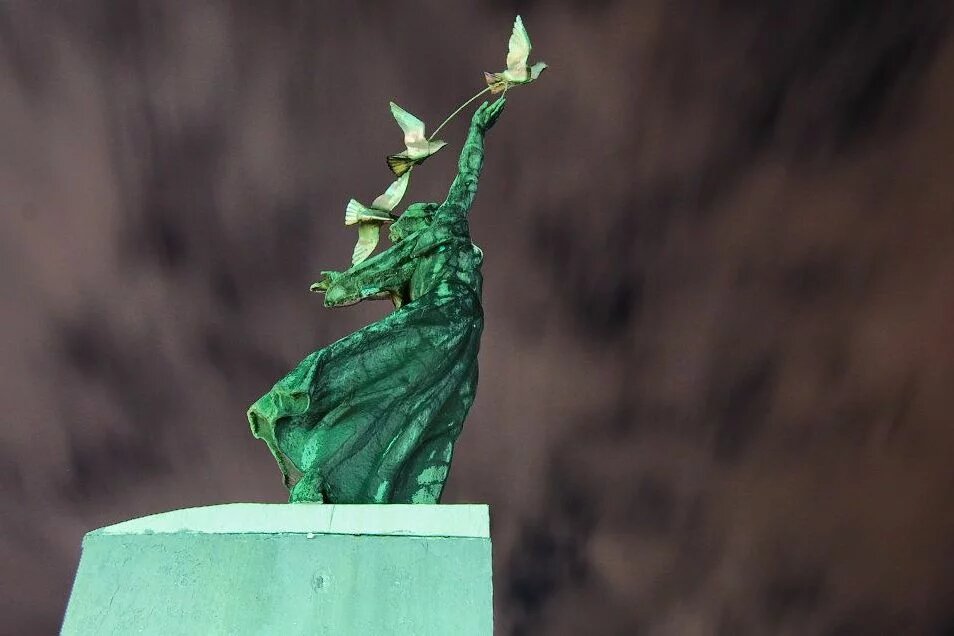
Today, the future of European nations is at stake in eastern Ukraine. If not effectively addressed, the Ukrainian crisis will pose the biggest threat the EU’s member states have experienced since 1945.
For some time now, violent conflict has been on the rise in Eastern Europe. To decrease the danger and heal the wounds in the region, the Ukrainian crisis should be addressed both at a country and at a regional level.
Currently, Ukraine is the weak link in a network of post-Soviet authoritarian regimes. By supporting the peace process, as well as democratically inclusive development in Ukraine and Russia, Europe can address its biggest security threat.
After Putin’s revolution of 2012-13, the huge resources the Kremlin has accumulated over the last decade were used to increase Russia’s authoritarian influence in Eastern and Western Europe. Already prior to that, the Kremlin’s tactics had been to use existing contradictions to create networks of influence.
Contradictions in Eastern Europe
Over the 25 years since the end of the Soviet Union extreme contradictions have arisen in the region, contradictions that are international as well as intranational in nature.
First of all, while Western and Central Europe developed through increasing integration and decreasing contradictions between neighbouring countries, Eastern Europe slowly became a region with a high potential of war. The integrating mechanisms that former Soviet countries created in the 1990s and 2000s were limited, and there were no effective mechanisms for conflict resolution. The gas and trade wars between Russia and Ukraine (2006-2013), as well as the Russian-Georgian war of 2008, have already shown that the contradictions between former Soviet countries are at a dangerous level. At the same time, ties between Eastern European nations were dissolving during the 1990s and 2000s.
Secondly, internal contradictions were on the rise within the new Eastern Europe nation states. Post-Soviet countries developed into institutionalised oligarchies and tended to abolish all checks and balances, overcentralise power in the nation’s capital, and use the state for their personal gain. The huge gap between the “hijacked state” and the promise of civic and economic liberties was mostly filled by ethno-nationalist and neo-Soviet movements. The highly fragmented societies of Ukraine and its neighbours were thus living in a state of ‘cold civil wars.’
Thirdly, the growing competition and the specific forms of co-operation between the Russian Federation, the US, and the EU (and its member states) has also heightened contradictions in Eastern Europe. Putin’s Eurasian Union and the project of a ‘Conservative Europe,’ the Organization for Democracy and Economic Development (GUAM) promoted by US, and the EU’s ‘fortress Europe’ with its new iron curtain have all deepened divisions within the region – and especially within Ukraine.
Contradictions in Western Europe
The Kremlin has built relationships with anti-EU forces in old and new Europe. These activities aim to obstruct EU involvement in Eastern Europe; create pro-Russian lobby groups in all EU countries; and divide the Western political elites and thus limit their ability to respond to Russia’s aggressive stance in the East.
Anti-EU movements of the radical right and left in Western Europe have more and more links to the Kremlin, and, over the last two years, radical European political parties have supported Russia a number of times.
A clear example of how the Kremlin intervenes in the EU’s internal politics is the project ‘Conservative Europe.’ Its aim is to create a network of conservative political forces to counter liberalism within EU and its member states. The Kremlin has become quite adept at using existing contradictions within the EU and the West to limit Western powers’ political influence.
How Russia exploits the contradictions in Ukraine
Ukraine’s political system was one of the most fragile in the post-Soviet region. Unlike any of its neighbours, Ukraine experienced two revolutionary cycles – one between 1991-2004 and one between 2005-2014. Both cycles began with the promise of liberty, then turned into an oligarchy (when the private sector took over public institutions), followed by the attempt to establish an authoritarian ruler, and ended in mass protests that overthrew authoritarian rule, at least for the moment.
Each time the mass protests lead to a change of government, Ukraine was on the brink of breaking apart; social, ethnic, and regional divisions increased, and the elites’ selfishness did nothing to mend them.
Russia’s response to Euromaidan was based on the lessons learned in 2004-5. Using the period without an acting government (22 February to early March 2014), the Kremlin supported separatist movements in Crimea and eight oblasts of Ukraine, and Russian forces were used to annex Crimea, while material and manpower was supplied to other separatists fighting Ukrainian forces.
Recommendations
To address the current crisis in Ukraine, I would recommend:
- Continue actions that put pressure on all conflict parties to immediately end the war;
- Address humanitarian issues in the war zone (famine, health, basic security);
- Deal with the crisis in Ukraine as a regional one and assist in establishing mechanisms for conflict resolution in Eastern Europe;
- Support democratic inclusive development in Ukraine and Russia;
- Limit involvement of the Kremlin in the internal affairs of the EU and its member states.